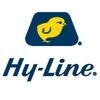Explore all the information on
Poultry gut health
The efficient conversion of feed into its basic components for optimal nutrient absorption is vital for both broiler and broiler breeder production and welfare. Gut health, an intricate and complex area combining nutrition, microbiology, immunology and physiology, has a key role to play. When gut health is compromised, digestion and nutrient absorption are affected which, in turn, can have a detrimental effect on feed conversion leading to economic loss and a greater susceptibility to disease. In addition, recent changes in legislation on the use of antimicrobials, differing feed requirements and more efficient birds highlight the need for a better understanding of gut function and gut health.
Robust immunity in poultry flocks is essential to reducing reliance on antibiotics. Phileo’s post-antibiotic program provides three innovative nutritional solutions to boost overall poultry health. Safglucan ® , a key element...
Comments : 0
Recommendations: 0
INTRODUCTION Variability in the nutritional value of feed ingredients for poultry (and indeed other livestock species) has been widely reported over several decades and has been the impetus behind a sustained body of research work. For example, Sibbald and Slinger (1962), Mollah et al. (1983), and Leeson et al. (1993) reported variation in the apparent metabolizable energy (AME) content of corn (3,476–3,960 kcal/kg dry matter [DM]), wheat (2,948–3,960 kcal/kg DM),...
Comments : 0
Recommendations: 1
The 2021 Symposium on Gut Health in Production of Food Animals is pleased to announce that this year’s invited speakers are Mick Bailey, Melha Mellata, and Phillip Myer. Complete details on these...
Comments : 0
Recommendations: 0
...
Comments : 0
Recommendations: 0
1. Introduction Whey is the valuable by-product of the cheesemaking process resulting after the production of cheese, whey cheese or casein from milk. It represents 90% of the volume and 50% of the solids of milk and it is characterized by its high concentrations of water, lactose and sodium [1,2]. Whey disposal is problematic, due to its high organic matter content and resultant high biological oxygen demand. Large scale commercial cheese plants usually process whey to...
Comments : 0
Recommendations: 0
...
Comments : 0
Recommendations: 1
There is increasing pressure for the use of antibiotic growth promoters (AGPs) in poultry diets to be discontinued or reduced. In this context, the search for natural additives such as organic acids (OA) and essential oils (EO) has increased. Previous studies have reported beneficial effects on gut health of supplementing poultry diets with these natural feed additives. As in many countries the use of AGP is still allowed and the adoption of programs combining the effects of AGPs with feed...
Comments : 1
Recommendations: 3
INTRODUCTION Studies from humans and rats have showed the intestinal epithelium represents the largest area of exposure of the body to external pathogens and toxins (Abreu, 2010; Slack et al., 2012). The secretory immune system, including secretory IgA (sIgA) and the mucus, serves as the first line of defense to limit epithelial contact with pathogenic microorganisms and other potentially dangerous antigens (Abreu, 2010; Slack et al., 2012; Zhang et al., 2015). Immunoglobulin A...
Comments : 0
Recommendations: 1
Introduction Advances in genetics has certainly produced commercial strains of poultry and pig with greater performance (e.g. growth, reproduction) with minimal feed input. For example, over the last 5 decades, the body weight of broilers at 42 days has increased by 25-50 g per year and the feed conversion ratio to 2 kg body weight has improved 2-3 points annually (Havenstein et al., 2003; Gous, 2010; Aviagen, 2019). With the introduction of crosses in...
Comments : 0
Recommendations: 3
Make your plans now to attend the in-person 2021 Symposium on Gut Health in Production of Food Animals from October 31-November 3, 2021.
You cannot attend the symposium in person? No problem. The meeting will be live streamed from November 1 to 3. Register virtually today.
The symposium is now accepting abstract submissions, meeting registrations, and hotel reservations. Register and submit your abstract...
Comments : 0
Recommendations: 0
Introduction Although bacteria are too small to be seen without the aid of a microscope, their abundance by mass has been estimated to be 1,166 times larger than the mass of all humans. All animals contain populations of bacteria on outer and inner body surfaces such as the skin and the gastrointestinal tract, with the gastrointestinal tract being by far the most densely populated. It has been estimated that cattle, sheep, goats, pigs, chickens, ducks...
Comments : 0
Recommendations: 0
Introduction
The protein is an essential nutrient for every animal diet. It is a source for growth, maintenance, immunity and production for all animals. Actually, every animal species have they own requirement for amino acids. The amino acids are classified as essential amino acids or nonessential amino acids. The essential amino acids are the one not synthetized in vivo and need to be supplier for the diet. There is another...
Comments : 0
Recommendations: 0
INTRODUCTION Distillers dried grains with solubles (DDGS) are by-products obtained during production of biofuels as renewable energy sources. During starch fermentation from cereal grains, ethanol and CO 2 are produced; meanwhile, the remaining nutrients are concentrated in the DDGS fraction (Singh et al., 2005). Corn is the main cereal used in ethanol production in the United States; however, other grains such as wheat, barley, and sorghum are utilized in different...
Comments : 0
Recommendations: 0
1. Introduction Phytogenic feed additives (PFA) are the plant derived products used to improve performance of livestock and poultry (Windisch et al., 2008; Jacela et al., 2010). The PFA comprise of a wide variety of herbs, spices and products derived thereof and are mainly essential oils. This class of feed additives is at present used to a great extent as alternatives to the antibiotic growth promoters (AGP) in poultry and swine nutrition. Obviously, the ban imposed on the...
Comments : 0
Recommendations: 3


Endogenous Amino Acid Flows are Influenced by Age of Broiler Chickens
Suggested link
Maintaining a healthy poultry gut and immune system is an essential but controllable factor which can directly influence efficient feed conversion. Several studies have demonstrated that a selected yeast postbiotic promotes a healthy gut thus...
Comments : 7
Recommendations: 3
1. Introduction The modern broiler chickens are always vulnerable to impaired nutrient digestion, dysbacteriosis, cocci challenges, and exposure to Clostridium perfringens resulting in poor gut health and production performance. Previously, endogenous proteases were deemed to be sufficient for feed protein digestion [1, 2] despite the possibility of a considerable amount of undigested dietary protein reaching the hind gut [3-6]. Apajalahti and Vienola [7] are of the opinion that...
Comments : 0
Recommendations: 1
Progres® is a new and highly innovative product, developed by Hankkija FFI (former Suomen Rehu), for use in animal feeding. It has its roots in the Finnish forests. It is a naturally active force.
...
Comments : 2
Recommendations: 3
In the first part of this interview, Dr. Koushik De, Director-Technical Services at Novus International South Central Asia, points out the relationship between Trypsin Inhibitor (TI), Soybean and bird performance.
...
Comments : 0
Recommendations: 10
INTRODUCTION The continued use of antibiotics in feed has led to the emergence of antibiotic-resistant pathogenic organisms, which is a major concern in the poultry industry (Diarra et al., 2007; Garcia-Migura et al., 2014; Roth et al., 2019). Therefore, the use of in-feed antibiotics has been reduced, and the identification of alternative strategies to antibiotics has become a primary research focus. Comparisons of alternatives to antibiotics on gastrointestinal health, shown...
Comments : 0
Recommendations: 0
in this Interview, Alamanda Calvert, Research Manager, Poultry Specialist at Biomatrix International, points out the results of some field trials in birds using a multifaceted blend of natural ingredients allowing animals to effectively manage feed efficiency and overall growth.
...
Comments : 0
Recommendations: 2



.jpg&w=3840&q=75)












.jpg&w=3840&q=75)
















